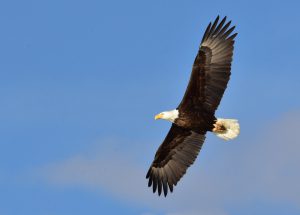Known locally as the Rio Grande Valley, or just “the Valley”, this four county region offers some of the most exciting birding in the nation. It’s near the top of many birder’s “must visit” list.
The Texas Rio Grande Valley is famous for birds like the Green Jay, Altamira Oriole, Gray Hawk, Ringed Kingfisher, and over 20 other species. The sub-tropical climate provides warm year-round temperatures, which occasionally attract Mexican rarities. The Valley is a top travel destination for American birding enthusiasts.
Below is a list of south Texas birds. Select any bird to jump to recommendations on where and how to see one.
South Texas Species
- Plain Chachalaca
- White-tipped Dove
- Groove-billed Ani
- Common Pauraque
- Buff-bellied Hummingbird
- Harris’s Hawk
- Gray Hawk
- Ferruginous Pygmy-Owl
- Ringed Kingfisher
- Green Kingfisher
- Northern Beardless Tyrannulet
- Great Kiskadee
- Green Jay
- Long-billed Thrasher
- Clay-colored Thrush
- Botteri’s Sparrow
- Olive Sparrow
- Altamira Oriole
Plain Chachalaca
Difficulty of Finding: Easy

Easiest Places to See Them:
- Bentsen Rio-Grande Valley State Park
- Estero Llano Grande State Park
- Santa Ana National Wildlife Refuge
- Laguna Atascosa National Wildlife Refuge
- Sabal Palm Sanctuary
What You Need To Know
Plain Chachalacas behave somewhat like roadrunners. They typically stay low to the ground, and prefer to dart in and out of dense vegetation rather than fly. They’re almost always seen on the ground or perched low in vegetation.
Chachalacas in public parks are accustomed to people and don’t mind being seen out in the open, making them easy to view.
They are usually silent, but when they do decide to vocalize, they’re possibly the loudest bird species in all of south Texas.
How to Find One
Chachalacas like having dense understory nearby to run to for safety. A mix of open or partially clear woodland immediately next to dense shrubby woodland is good habitat for them.
Feeders pull them easily, so they’re easy pickings at birds blinds.
Effortless spots to find them include:
- Bentsen State Park at the feeders, a quarter mile south of the visitor center.
- Estero Llano Grande State Park along the entrance path to the visitor center building.
- Santa Ana visitor center just behind the building.
- Sabal Palm Sanctuary at the feeding stations

Use birditinerary.com to create a trip plan around your priorities and timeline. It’s free – no annoying surprises. Only a valid email is required to use it. Let it do the planning for you so don’t miss birds you could have seen.
White-tipped Dove
Difficulty of Finding: Easy
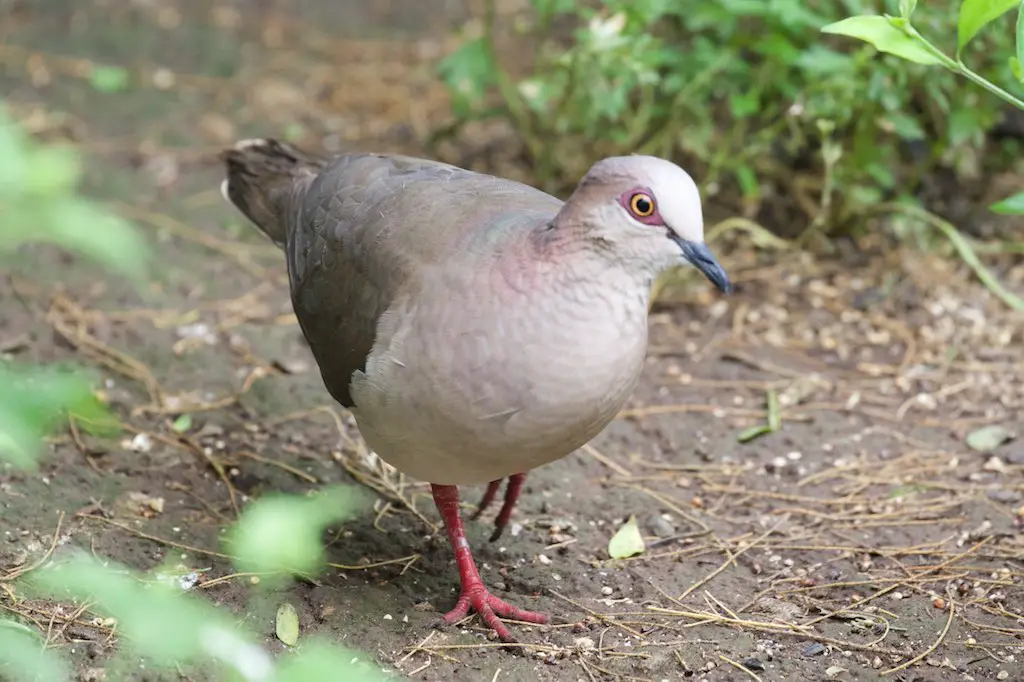
Easiest Places to See One:
- Frontera Audubon Center
- Bentsen Rio Grande Valley State Park
- Laguna Atascosa National Wildlife Refuge
- Sabal Palm Sanctuary
What You Need To Know
White-tipped Doves are the same size as the more common White-winged Dove, but you won’t see them perched on wires or flying overhead. They like to stay low to the ground and conceal themselves in dense shrub and woodland understory.
Like other doves, they can’t resist a free meal and will gorge themselves at feeders. Visit a feeding station or bird blind and chances of seeing a few White-tips are high.
They can also be seen walking through the understory of densely wooded areas, either alone or in small groups.
Groove-billed Ani
Difficulty of Finding: Difficult
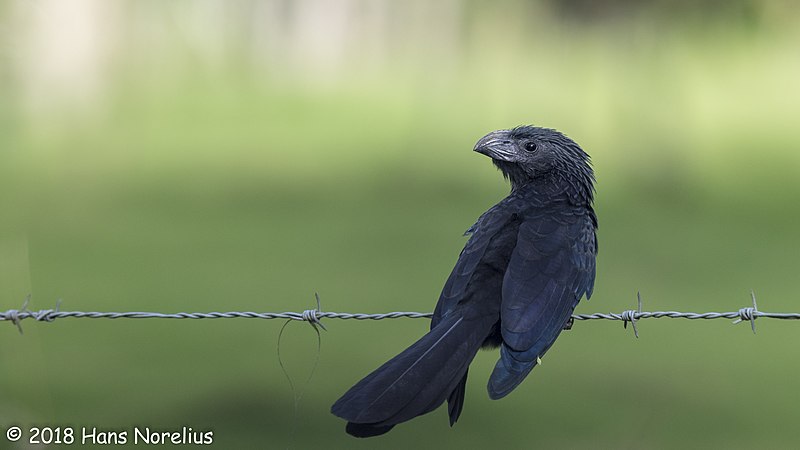
Easiest Places to See One
- Sabal Palm Sanctuary
- Laguna Vista Nature Trail
- Estero Llano Grande State Park
What You Need to Know
These sleek black birds look very similar to Great-tailed Grackles, which are abundant in most areas, so be careful with your identification. Don’t just write off every black bird with a long tail as a grackle, especially if you see it in thick brush.
Seeing a Groove-billed Ani is always a treat because it’s never a guarantee. They like dense brushy woodland to hide in, and are almost always moving in groups. Sometimes they’ll perch up high, but usually stay tucked behind branches and leaves.
How to Find One
Use eBird to find recent sightings. These birds tend to move around a lot, so recent finds are much more valuable and reliable than old sightings.
At Sabal Palm, walk the wetlands boardwalk and look for black birds roughly at eye level moving through the vegetation.
At Estero, ask the staff for recommendations. Some are very knowledgeable about the local birds and may point you to an exact spot.
Common Pauraque
Difficulty of Finding: Moderate
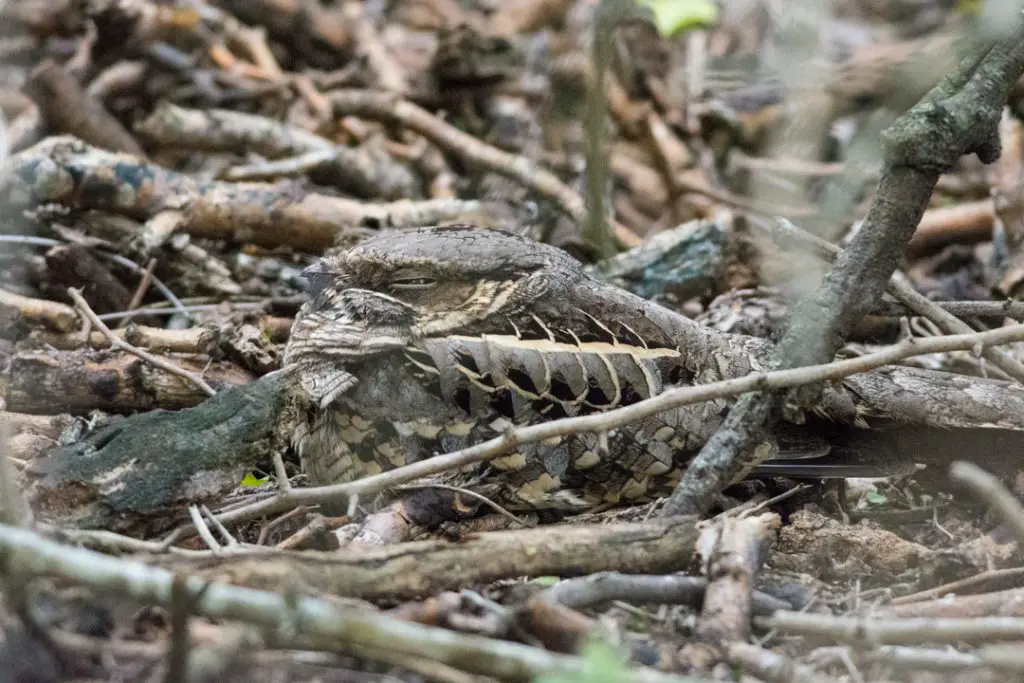
Easiest Places to See One:
- Brushline Road north of Hwy 186
- Bentsen Rio Grande Valley State Park
- Estero Llano Grande State Park
- Santa Ana National Wildlife Refuge
What You Need To Know
Concerning finding nightjars, like the Common Pauraque, there’s the easy way and the hard way.
The easy way is to wait until after sunset and last light when Pauraques begin vocalizing and flying around. Tent camp at Bentsen State Park and walk around with a flashlight, or drive down a gravel or dirt back road and use your car headlights. They’ll sit right in the middle of the road at last light and are easy pickings.
The hard way is to find one sleeping during the day. Their camouflage is excellent, and so they’re almost impossible to find on your own. But if you attend a guided bird walk, the guide will sometimes point out a known roosting location and get you great looks at a bird.
How to Find One
Attend a guided bird walk at Santa Ana NWR, or Estero State Park. Hope the guide points out a sleeping one on the ground.
Or – drive an unpaved road right at last light during the evening. Brushline Road north of Highway 186 is a reliable spot. Any other unpaved road with brushy, wooded habitat along the roadside will also work.

Go to birditinerary.com for a detailed trip schedule that is custom to what birds you want to see and the dates you plan on traveling. It will give you the best odds of seeing each bird on your list so you don’t come home empty handed.
Buff-bellied Hummingbird
Difficulty of Finding: Easy

Easiest Places to See One:
- Bentsen Rio Grande Valley State Park
- Estero Llano Grande State Park
- Frontera Audubon Center
What You Need To Know
Like with all hummingbirds, hanging feeders make finding a Buff-bellied Hummingbird easy. Pretty much all state parks, nature parks, and wildlife refuges have hummingbird feeders near the main building.
Unlike other hummingbird species, Buff-bellied hummers are present in strong numbers year-round. They’re still easy to find during winter months.
Their habitat is open woodland, so they can appear anywhere with a decent canopy nearby.
Where to Find One
The Bentsen State Park visitor center has multiple hummingbird feeders. Walk around the gardens, especially on the back side of the building, and you’ll have one in no time.
Estero State Park has feeders along the walkway just before you enter the office. You may need to wait 15-20 minutes, but one should show up.
Frontera has great habitat for hummingbirds throughout the property. See them along the trails as you walk, or sit and wait by a hummingbird feeder. You’ll likely see multiple at this location.
Harris’s Hawk
Difficulty of Finding: Easy

Easiest Places to See One:
- Santa Ana National Wildlife Refuge
- Estero Llano Grande State Park
- Laguna Atascosa National Wildlife Refuge
What You Need To Know
Harris’s Hawks are beautiful red-brown hawks with a white rump (top of tail). Look for the white rump in flight to confirm your ID.
These hawks love shrubby woodland, or scrubland, but can sometimes be seen in more open areas or near patches of hardwood forest. Any stretch of road with abundant mesquite trees is a good bet for seeing one.
The behavior of these hawks is typically to perch and make short, low flights. Seeing one soaring high overhead is very unusual. So watch for them flying within 30 or 40 feet of the ground, or perched in a tree.
How to Find One
Laguna Atascosa has an abundance of the wooded, shrubby habitat they like. You’ll likely see multiple driving in before even reaching the visitor center.
Santa Ana NWR has a hawk watch tower that is excellent for viewing raptors in the area, including Harris’s Hawk. Mid to late morning is usually the best time of day to be on the tower because that’s when raptors really start flying around.
Estero State Park always has one or two Harris’s Hawks hanging around. You may spot them from the viewing deck at the visitor center, while on the trails, or perched in a tree on the edge of the tropical zone on the west side of the park.
Gray Hawk
Difficulty of Finding: Moderate

Easiest Places to See One:
- Santa Ana National Wildlife Refuge
- Sabal Palm Sanctuary
- Bentsen Rio Grande Valley State Park
- Resaca de la Palma State Park
What You Need To Know
Gray Hawks like water. Areas near a river or wetlands are a good place to look, especially near the Rio Grande River.
Young juvenile Gray Hawks look very different than the adults, both in color and patterning. Study up ahead of time so you know what you’re looking for.
How to Find One
Spend time walking around waterways and wetlands. The resaca (water channel/oxbow lake) at Bentsen State Park is a decent area, as is the hawkwatch tower at the southeast end of the park.
Pintail Lakes, the open wetlands at Santa Ana Wildlife Refuge, always has one or two Gray Hawks hanging around. They’re regular flyovers here, and can also be seen at the hawkwatch tower.
Wherever you are in the Valley, the strategy for Gray Hawk is to be close to freshwater with both wooded and open areas nearby.
Ferruginous Pygmy-Owl
Difficulty of Finding: Difficult
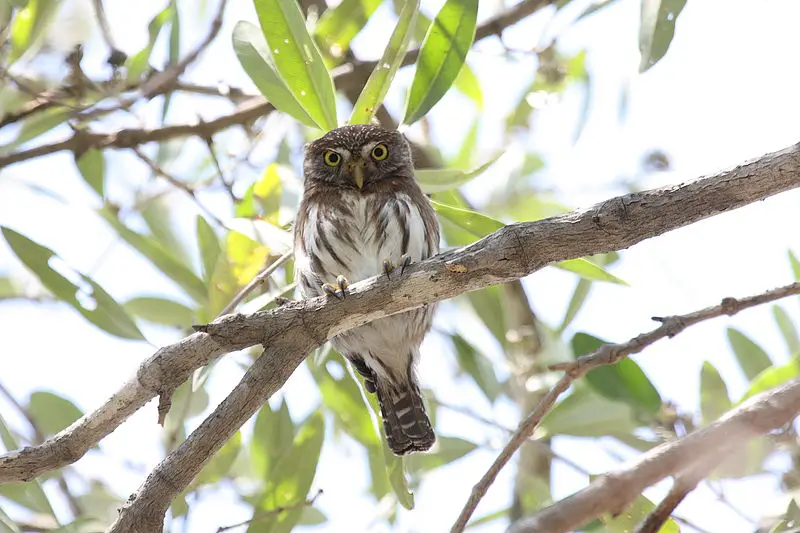
Easiest Places to See One:
- The King Ranch – Norrias Division
- Brushline Road north of Hwy 186
What You Need to Know
These tiny diurnal owls can be consistently found in one place: the King Ranch. Specifically the Norrias division of the King Ranch.
The King Ranch can only be accessed by a guided birding tour, which costs $135 for 9 hours.
Finding one on your own in other areas requires searching expansive scrub brush habitat outside of urban areas. Tracts of land with plenty of mature Mesquite trees are a decent bet.
How to Find One
These owls are most commonly seen during morning hours. Evenings shortly before sunset is the second best time to search.
The best stretches of road to search are Brushline Road north of Highway 186, and Highway 186 between San Perlita and Port Mansfield. Pull over and walk short distances with your binoculars. Look for perched owls, and listen for small songbirds fussing as they may be mobbing an owl.
Ringed Kingfisher
Difficulty of Finding: Moderate

Easiest Places to See One:
- Bentsen Rio Grande Valley State Park
- Santa Ana National Wildlife Refuge
- Estero Llano Grande State Park
What You Need To Know
This large kingfisher likes sizable water sources with well vegetated banks. You won’t find them at small ponds or narrow creeks.
They typically perch higher up than Belted Kingfishers, and so larger trees next to a river or large pond is a good sign.
The Ringed Kingfisher call is louder than the more common Belted Kingfisher. Listen for their dry, machine gun rattle to help you find one.
How to Find One
At Bentsen State Park, walk all the way down to the resaca (oxbow lake) nearly a mile from the visitor center. Sit and watch for flyby kingfishers, especially during morning hours. Listen for the Ringed Kingfisher call.
Santa Ana has open water at Pintail Lakes, and vegetated wetlands at North Lake. Ringed Kingfisher can be seen perched or flying over at either location. Flyovers are easier to detect both because of the movement and because they call more in flight. Then tend to perch in silence.
Estero State Park has many small pockets of water, but the best kingfisher habitat is Alligator Pond and the river at the south end. Ringed Kingfishers can sometimes be seen flying over the water, and sometimes even hovering in place preparing to dive.
Green Kingfisher
Difficulty of Finding: Easy
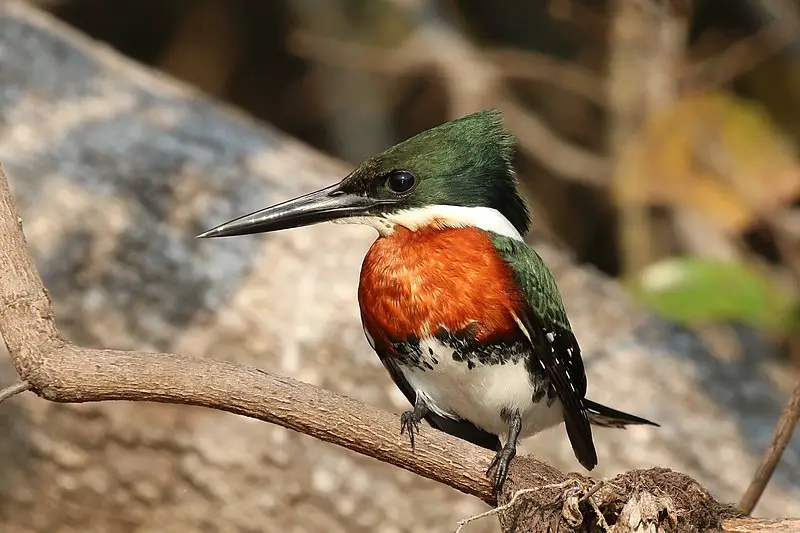
Easiest Places to See One:
- Sabal Palm Sanctuary
- Edinburg Scenic Wetlands
- Bentsen Rio Grande Valley State Park
- Santa Ana National Wildlife Refuge
What You Need To Know
Almost any consistent source of water in the Valley with low hanging vegetation can potentially have a Green Kingfisher, making them possibly the easiest species of kingfisher to find in south Texas.
Green Kingfishers like to perch low, often only several feet above the water. Scan edges of water and look for them perched on low, overhanging branches.
Know their clicking call, like two pebbles being quickly hit together several times. This is often the easiest way to detect them.
How to Find One
Every time you’re next to water with plenty of shrubby, wooded vegetation growing along the water edge, slowly scan with your binoculars. They can be perched low, or 6 – 7 feet above the water.
At Bentsen State Park, listen for them calling on the close bank of the resaca nearly a mile walk from the visitor center.
At Santa Ana NWR they like to hide in plain sight along the walking trail at Pintail Lakes. Look in the reeds of the small spit of water directly opposite East Lake.
Exact GPS of this spot: 26.076748, -98.131862
Northern Beardless-Tyrannulet
Difficulty of Finding: Moderate
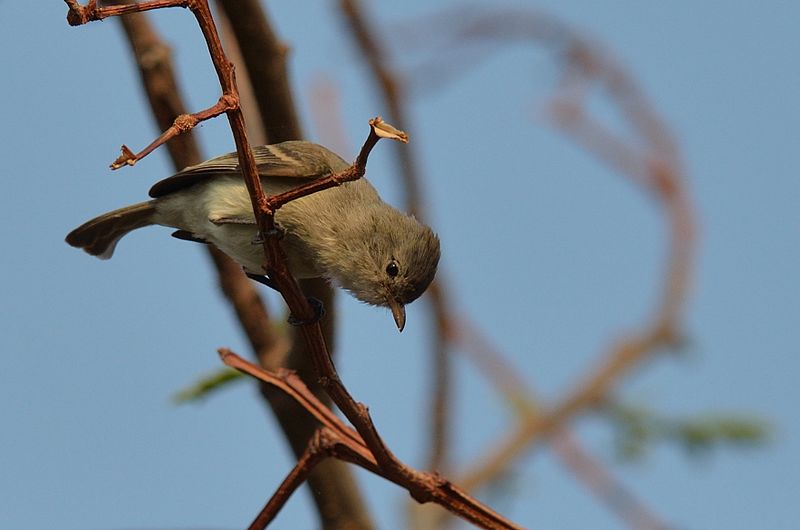
Easiest Places to See One:
- Santa Ana National Wildlife Refuge
- Bentsen Rio Grande Valley State Park
- Estero Llano Grande State Park
What You Need To Know
Northern Beardless-Tyrannulets are present in the Valley year-round, but are easiest to find during spring and summer because that’s when they’re most vocal.
Their habitat is dense woodland, especially near water and streams. Look for a tiny flycatcher actively moving through the branches and flicking its tail.
How to Find One
Beardless-Tyrannulets are often found perching in Mesquite trees. They don’t perch up high or out in the open like other flycatchers, but are often a bit more concealed. Look for movement and listen for their whistle call.
At Santa Ana NWR, they are often heard in the vicinity of Pintail Lakes. Be sure to listen for them along the wooded edges surrounding the small lakes. They have also been found near the visitor center, near the hawkwatch tower, and other wooded areas of the refuge.
At Bentsen State Park they’re most often detected between the visitor center and wooded interior of the park. “Heard only” observations are common here, so rely more on your ears than your eyes to find one.
At Estero State Park they’re most often seen and heard in the tropical zone, which is the old growth forest on the west side of the park.
Great Kiskadee
Difficulty of Finding: Easy

Easiest Places to See One:
- Bentsen Rio Grande State Park
- Santa Ana National Wildlife Refuge
- Estero Llano Grande State Park
- Resaca de la Palma State Park
- Sabal Palm Sanctuary
- Literally any semi wooded area near water
What You Need To Know
Great Kiskadees are bright, water loving flycatchers with a lot of personality. Their loud squeaky calls can be heard in virtually any natural area in the Valley. These things are everywhere.
How to Find One
Spend some time walking around any lake, pond, or stream, and you’ll certainly find a Kiskadee or two. Even if you only hear them.
Effortless spots to get one include Pintail Lakes at Santa Ana NWR, the resaca at Bentsen State Park .75 miles south of the visitor center, the boardwalk at Sabal Palm, and many other places. They can be found throughout Estero State Park.
At many parks you’ll hear one on arrival from the parking lot before you even reach the visitor center.
Green Jay
Difficulty of Finding: Easy
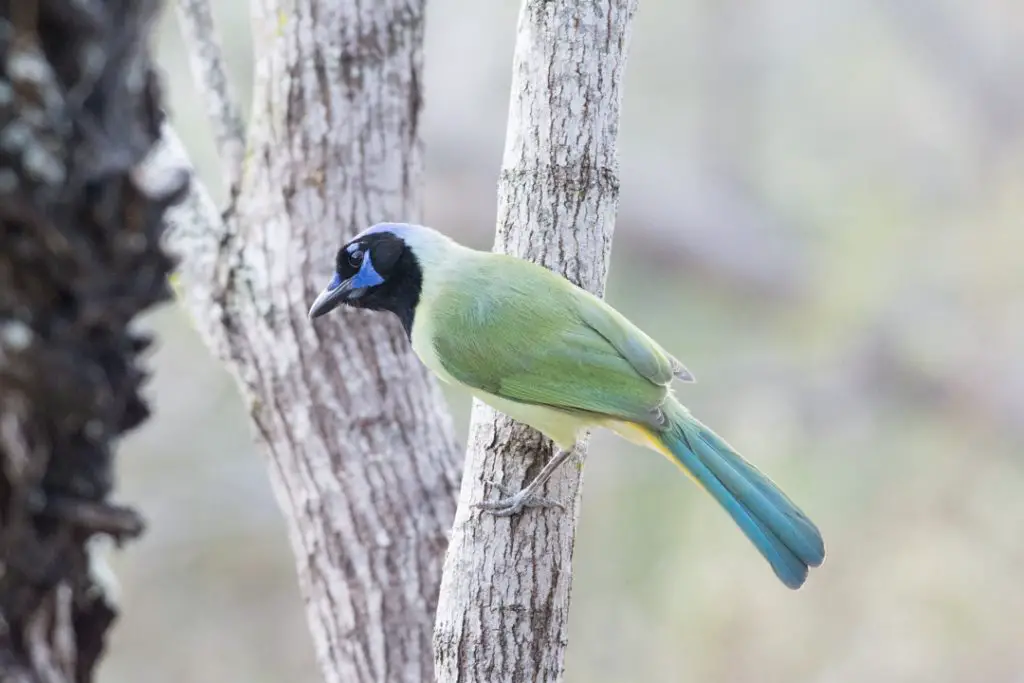
Easiest Places to See One:
- Bentsen Rio Grande Valley State Park
- Resaca de la Palma State Park
- Laguna Atascosa National Wildlife Refuge
- Sabal Palm Sanctuary
What You Need To Know
Green Jay is one of the easiest to find species on this list.
Green Jay is considered a common bird in the Valley and isn’t typically hard to find. Spend an hour or two birding in a wooded to semi-wooded area and you’re bound to come across them.
Like other American Jay species, Green Jays like to be up in mid-sized to large trees, can be very vocal, and are often drawn in by feeders and easy food.
Green Jays aren’t usually shy and don’t usually spook easily. They travel in family groups and individuals are rarely seen alone. Birders often come across groups of them, which can be as large as 10 or more.
How to Find One
The easiest way to find a Green Jay is by visiting a state park or wildlife refuge with bird feeders. All locations listed above have feeders.
Sometimes you can listen for their calls and chatter, but other times they seem content with silence. Luckily they’re fairly active birds so looking for movement is a reliable way to find them.
Long-billed Thrasher
Difficulty of Finding: Easy

Easiest Places to See One:
- Santa Ana National Wildlife Refuge
- Bentsen Rio Grande Valley State Park
- Frontera Audubon Center
- Laguna Atascosa National Wildlife Refuge
What You Need To Know
Long-billed Thrashers love wooded areas with a mix of dense and open understory. They run along the ground in search of food, and dart back into dense undergrowth when threatened.
This is a common Valley bird and is generally easy to find. Vegetated parking lots and around park visitor centers tend to be great places to find them.
Their songs are wonderfully complex and go on much longer than most birds. The give away of a thrasher singing is that the song phrases change every 3-5 seconds, like many different bird songs strung together into one long song. The phrases do not repeat like with a Northern Mockingbird.
How to Find One
At Bentsen State Park spend time walking around the visitor center building, you’ll likely see multiple. Look low on the ground.
At Santa Ana NWR the vegetated edges of the parking lot can be productive. The bird blind (seen from inside the building looking out the window) and the back side of the building are both good spots to check.
This bird is often found throughout many parks and refuges. They often come to feeders and water features, making them even easier to see.
Clay-colored Thrush
Difficulty of Finding: Moderate
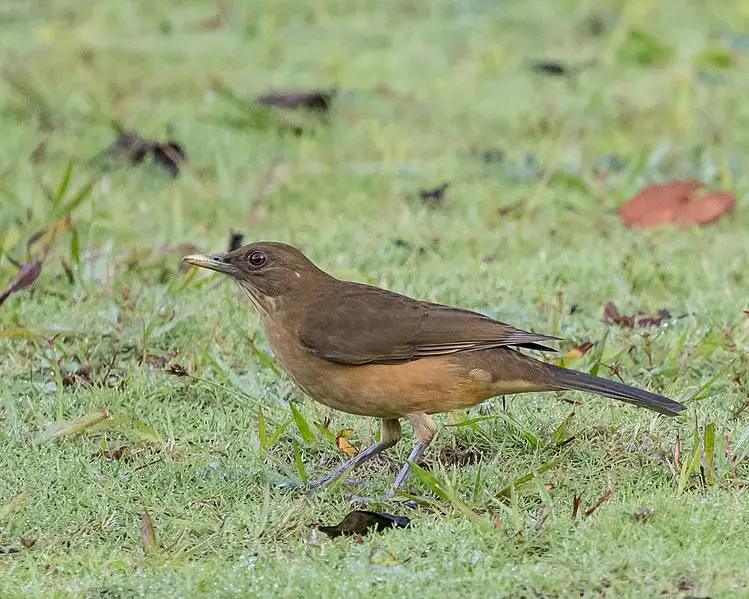
Easiest Places to See One:
- Estero Llano Grande State Park
- Frontera Audubon Center
- National Butterfly Center
- Bentsen Rio Grande Valley State Park
What You Need To Know
Clay-colored Thrushes tend to like strong canopy cover with a mix of dense and open understory. They hop around in more open areas searching for food, but never stray far from dense cover.
Any areas in the Valley with clusters of large, tall trees is a decent place to try for Clay-colored Thrush.
Some areas only have a few individuals, whereas others (like Frontera Audubon Center) have them in abundance. These thrushes tend to be very localized based on habitat.
How to Find One
At Estero State Park, they’ll mostly be around the Tropical Zone at the west end of the park. There’s plenty of big trees here with ample canopy cover, which is what Clay-colored Thrushes tend to like.
At Frontera they’re all over. This property is heavily vegetated and has plenty of tall trees. Perfect habitat.
The National Butterfly Center, next door the Bentsen State Park, also has some good habitat with tall trees on the back side of the property. Clay-colored Thrushes are reliable here.
Bentsen State Park also gets them, but not in as strong numbers as previously mentioned locations. Search around the visitor center, and keep your eyes open at the first major feeding area not even a quarter mile south of the visitor center.
Botteri’s Sparrow
Difficulty of Finding: Moderate
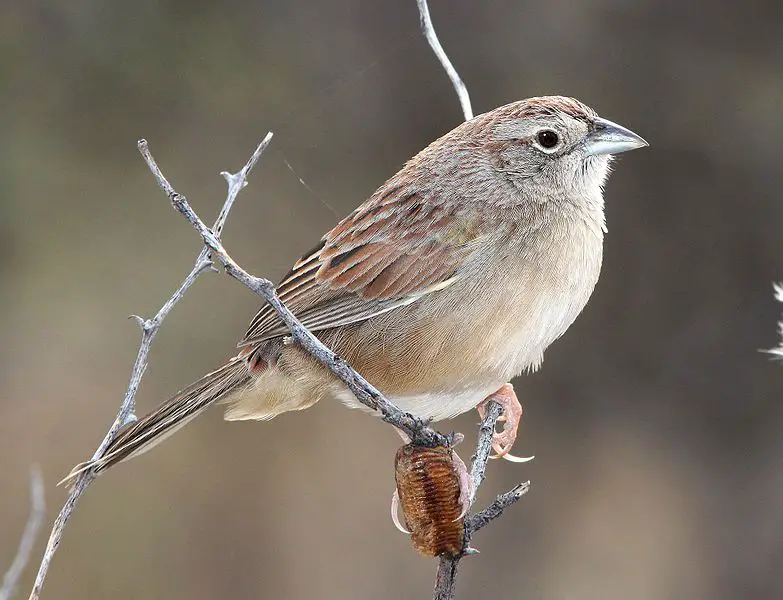
Easiest Places to See One:
- Old Port Isabel Road
- Laguna Atascosa
- Sacahuistale Flats
What You Need To Know
Botteri’s Sparrow is a shrubby grassland species, and it’s only here during breeding season from April to July.
These sparrows are most often detected as they’re perched up on a barbed wire fence, or by hearing them sing. Familiarize yourself with their song before you go searching.
The song can sound extremely similar to an Olive Sparrow, which can be found in the same locations.
The Botteri’s song has more lead in notes before it does the accelerating series of notes. The notes aren’t quite as evenly spaced, so the song sounds “twitchy” or uneven.
The Olive Sparrow song is very even and clean sounding.
Botteri’s Sparrows can look similar to Cassin’s Sparrow, which occupies the same habitat and is often more numerous than Botteri’s. So get ready to separate the two if you see a sparrow perched up.
How to Find One
Drive Port Isabel Road slowly and look for birds perched along the road side and in shrubby vegetation. This is an unpaved road, so watch for dips and potholes. They can get bad after a rain. Avoid this road if it’s really muddy and you don’t have a four-wheel drive vehicle.
Port Isabel Road is also good for Aplomado Falcon.
Botteri’s Sparrow is seen scattered around Laguna Atascosa NWR, which is a massive property. They’re typically seen and heard along roadsides. Pull over as you’re driving in and walk the fenceline for a few minutes, you may get a Botteri’s.
Olive Sparrow
Difficulty of Finding: Easy
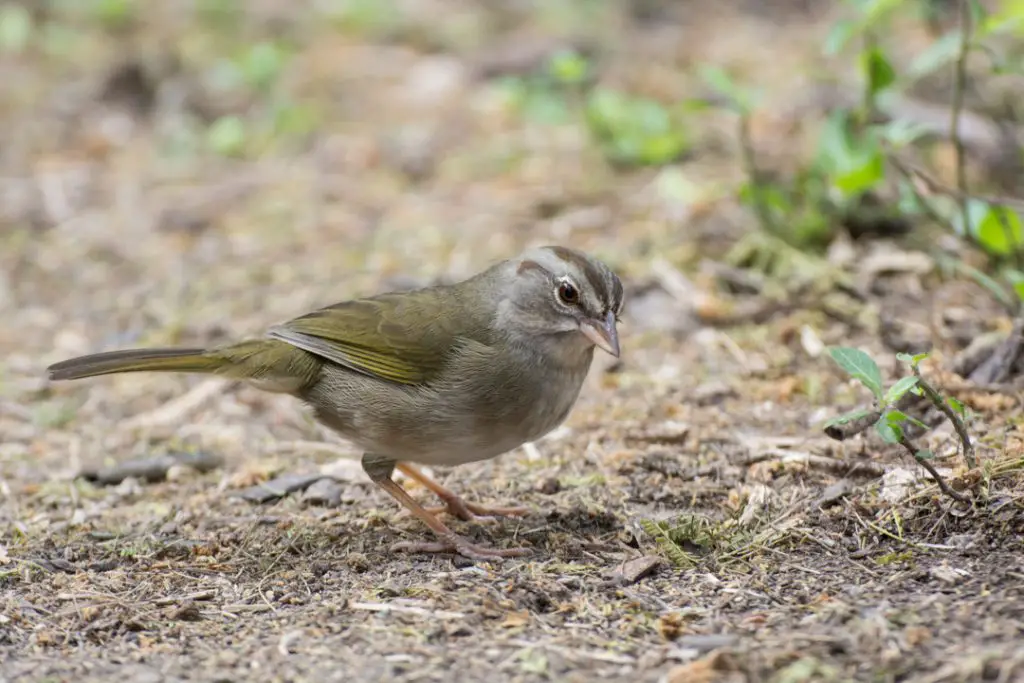
Easiest Places to See One:
- Santa Ana National Wildlife Refuge
- Bentsen Rio Grande Valley State Park
- National Butterfly Center
- Sabal Palm Sanctuary
- Laguna Atascosa National Wildlife Refuge
What You Need To Know
These sparrows are common in the Valley, but tend to stay hidden low in vegetation. You can walk right past one and not know it.
During breeding season when the males are singing, you’ll hear the song almost constantly as you walk around.
During winter months when birders are most active in the Valley, you’ll have to listen to the small rustling sounds they make as they hop around in leaf litter from within bushes and shrubs.
How to Find One
Use your ears as much as possible to clue you in to an Olive Sparrow. Listen for small movements and rustling down low, and for their accelerating, bouncy song.
At Santa Ana NWR they’re detected all around the visitor center. The parking lot area, behind the building, and the well vegetated trails that fan out and away from the building. Look and listen for movement low, and along the edges of dense vegetation.
Use the same strategy at other locations. It’s a common bird, you just have to detect it.
Altamira Oriole
Difficulty of Finding: Easy

Easiest Places to See One:
- Bentsen Rio Grande State Park
- Santa Ana National Wildlife Refuge
- Estero Llano Grande State Park
- Resaca de la Palma State Park
- Sabal Palm Sanctuary
What You Need To Know
Altamira Orioles are one of the most iconic south Texas species. Lucky for birders, they’re also pretty easy to find.
They can be found in shrubby woodland, more open shrubland, and along the edges of clearings. They’re present at nearly all state parks, refuges, and sanctuaries in the Valley.
Feeding stations and platforms often draw them in, making them even easier to find.
Altamira Orioles are much more common than Hooded Orioles, but both occur in the Valley and they look very similar. Be sure to differentiate them in the field.
How to Find One
Altamira Orioles are usually seen at eye level or higher, unless they’re feeding on something down low.
Feeders are the easiest way to see this bird up close. Cut oranges are a favorite of theirs, so any feeder with a fresh looking orange is a good bet.
As with many birds, these orioles are much easier to see during the active morning hours. Once late morning hits, they tend to retreat back into the vegetation.
Plan Your Birding Trip to the Rio Grande Valley
You probably noticed some hotspots showed up repeatedly on this list (Bentsen, Estero, Santa Ana). If you need to limit your visit to just a few great locations, see the South Texas Birding Guide for our top 5 recommendations.
Use the Texas Hotspots Map to familiarize yourself with other locations you want to visit. Each location on the map has a full birding guide with photos so you know what to expect.



